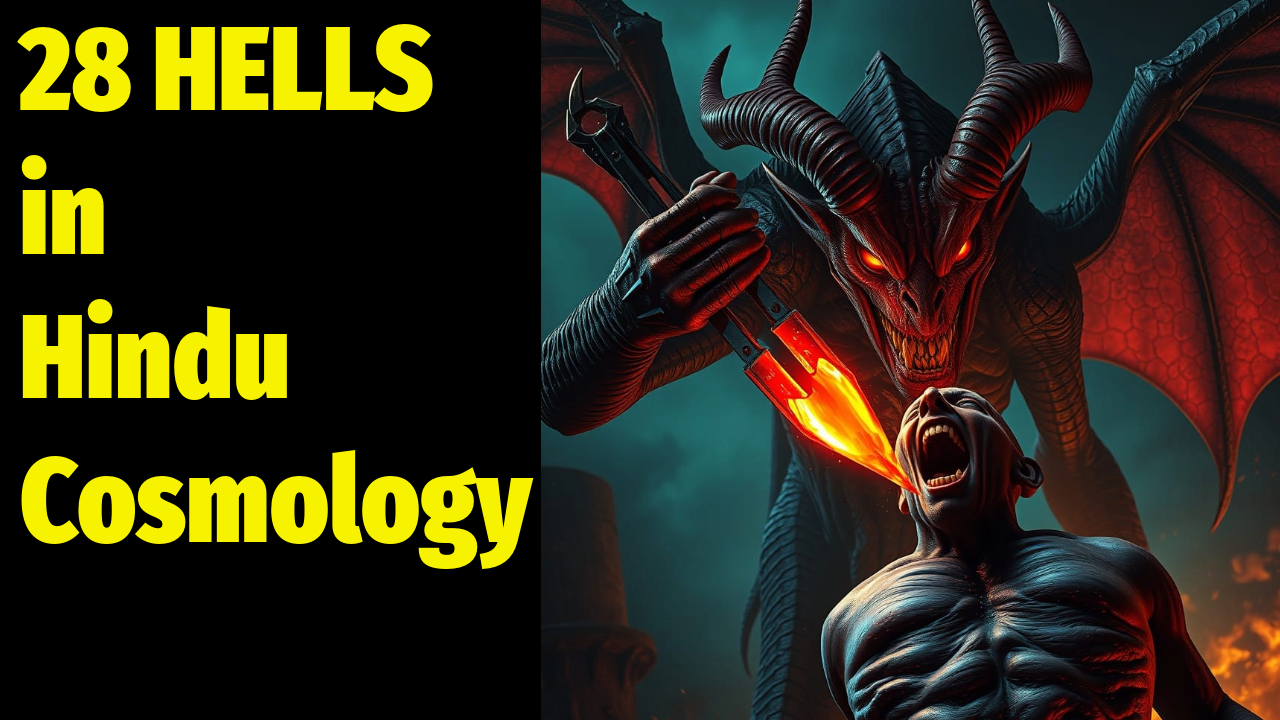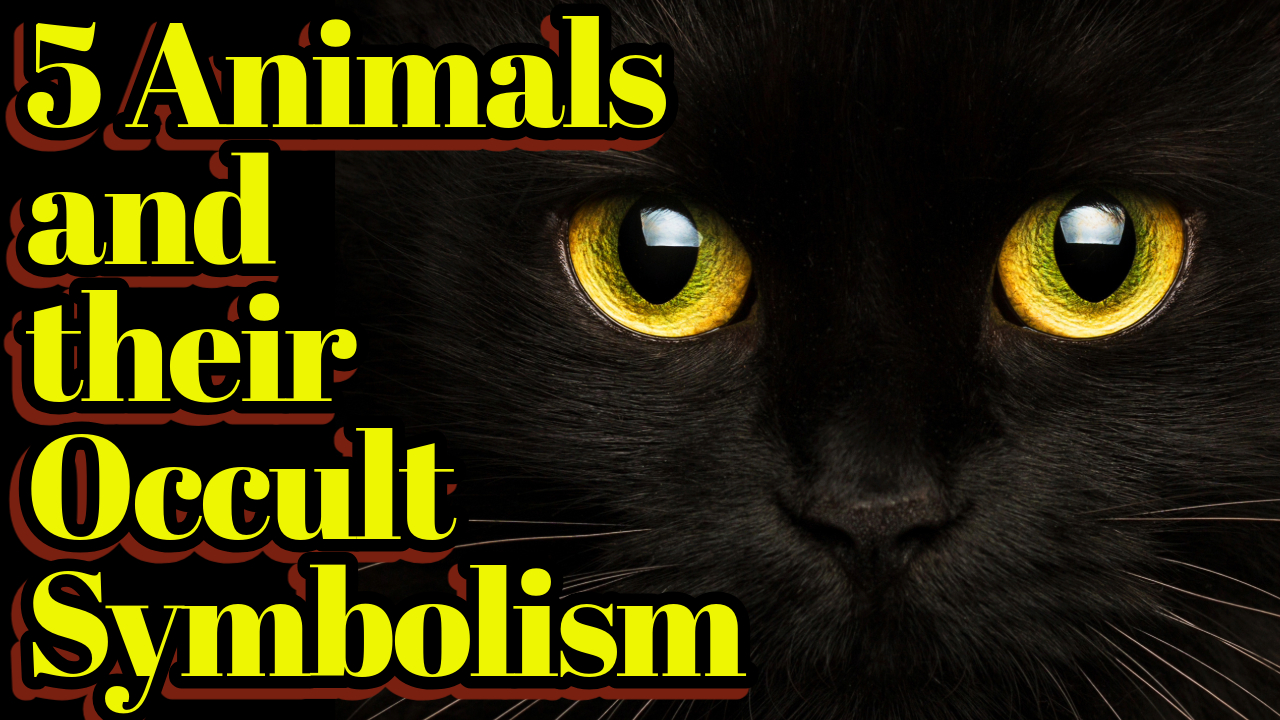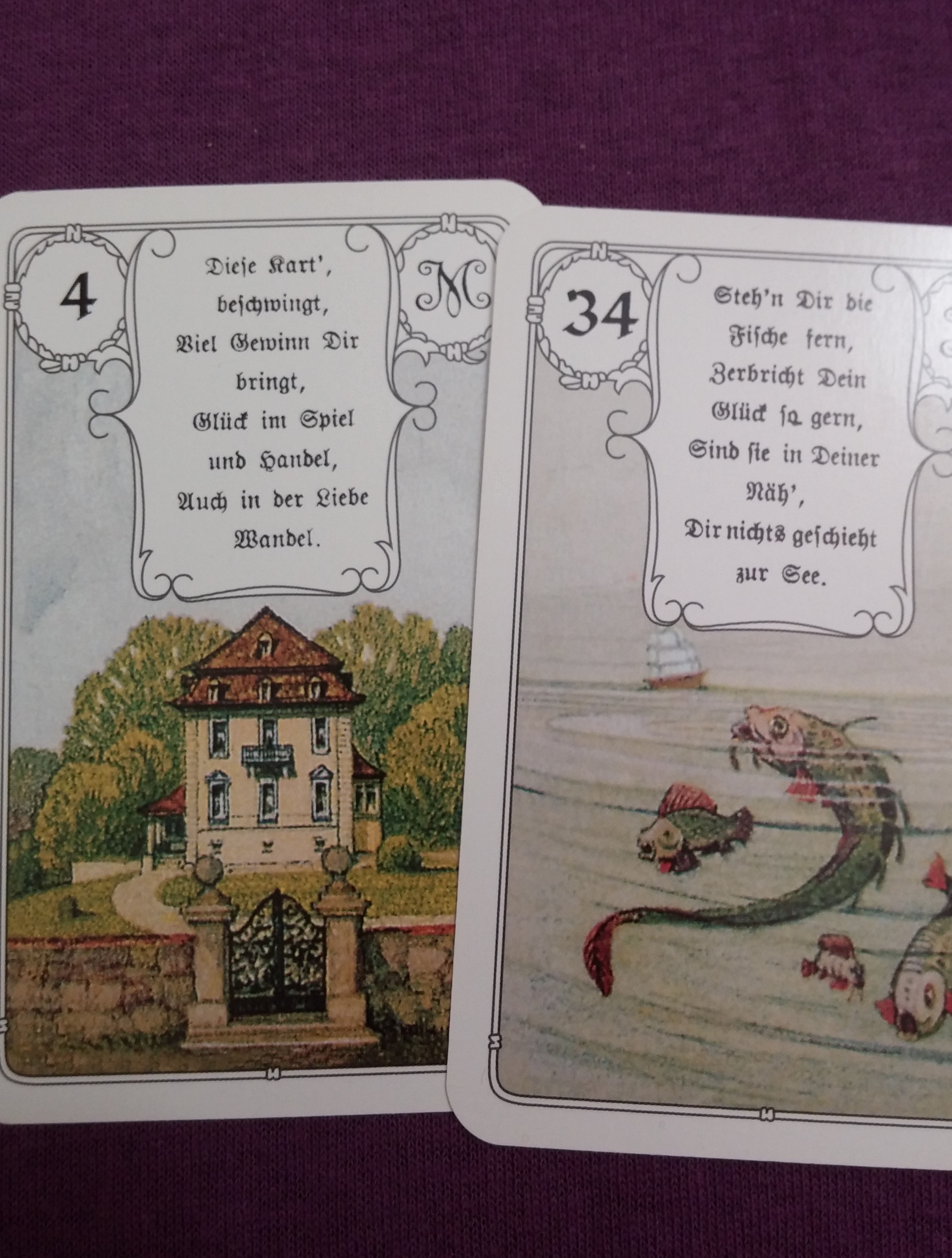
In the vast and intricate web of Hindu cosmology, beyond the material world and hidden in the depths of Patala, lie the 28 Narakas.
The hellish realms of suffering, which serve as places where the soul undergoes purification before its next birth. These are not eternal damnations rather temporary realms of retribution, where the consequences of one’s actions (Karma) are met with precise and fitting punishments.
These 28 Narakas are described in several Hindu scriptures, including the Bhagavata Purana, Agni Purana , Garuda Purana, Vishnu Purana, Vedas, Upanishads and Manusmriti among other texts and are not limited to only 28. Additional sources list multiple hells.
The 28 discussed here today can be found in the Srimad Bhagavatam.
Each realm is uniquely horrifying, designed to reflect the nature of the sins committed by the soul. Those who commit acts of violence, deceit, greed, or cruelty find themselves subjected to tortures that mirror their wrongdoings.
Whether it is drowning in rivers of blood, being devoured by demonic hounds, or impaled on flaming spears, each punishment is a direct consequence of one’s misdeeds.
But before we continue exploring the terrifying depths of Naraka, make sure to like, subscribe, and hit the notification bell so you don’t miss any deep dives into esoteric wisdom and ancient mysteries. Now, let’s descend into the underworld…
Hell can be found in between the three worlds, in the south below the earth and a little above the causal waters below Pâtâlaloka.
Presiding over these shadowy domains is Yama, the god of death and justice. He is also known as Dharma Raja (Lord of Righteousness). Yama is tasked with maintaining the cosmic balance by ensuring that every soul receives its due rewards and punishments. His kingdom, Yamaloka, is the gateway to the afterlife, where souls are judged based on their earthly deeds.
Assisting him in this divine judgment is Chitragupta, the celestial scribe and record-keeper of karma. Every thought, word, and action of a being is meticulously recorded in his Agrasandhanī (eternal register) When a soul arrives at Yama’s court, Chitragupta presents a detailed account of its past life, determining whether it will ascend to Svarga (the heavens), return to the earthly realm, or descend into Naraka (hells) for purification.
Unlike the Christian or Islamic concept of an eternal hell, Naraka is a transitory realm, where sinners suffer until their karmic debts are repaid, after which they are reborn into the cycle of samsara (reincarnation), sometimes even being reborn into a lower form of existence, to continue its karmic journey. Thus, these realms are not only about suffering but also about cosmic justice and moral realignment.
Some believe that Naraka exists in unseen astral planes, while others interpret it as the psychological suffering one undergoes due to guilt and unresolved karma.
Despite what we believe, These texts leave us with a mystery to unravel.
So lets have a look at The 28 Narakas and Their Descriptions
Each Naraka is associated with specific sins and punishments which is briefly described.
1. Tamisra (Darkness)
Sin: Anyone who steals someone else’s money, wife, or children
Punishment: They are thrown into blinding darkness and suffer extreme torment, being deprived of food and water and left starving, while being beaten with sticks and yelled at by the Yamadhutas , the agents of Yama . The pain and punishment can become so unbearable that they may even lose consciousness from sheer agony. After regaining consciousness, they are beaten again. This continues until the karmic debt is paid.
2. Andhatamisra (Blind Darkness)
Sin: Anyone who slyly cheats someone to gain their money, wife, children or possessions.
Punishment: The sinful living being is subjected to extreme miseries and pain so much that he loses intelligence and sight, becoming blind and becoming similar to a tree cut down by it’s roots.
3. Raurava (Torment of the Wicked)
Sin: Commiting violent or cruel acts against many living entities.
Punishment: These living entities are transformed into animals called rurus, that torture and inflict great pain on the sinful living being.
4. Maharaurava (Greater Torment)
Sin: A person who maintains his own body by hurting others
Punishment: He is put into this hell and is Devoured by 0:05:58.515 flesh eating animals called kravyādas 0:06:03.046
5. Kumbhipaka, The hell of the cooking pot (Boiling in Oil)
Sin: Killing or harming animals for pleasure and cooking poor land or sea animals alive.
Punishment: These living beings are thrown into a large pot and are boiled in hot oil.
6. Kalasutra (Hot Wire Hell)
Sin: Anyone who kills a Brahmin.
Punishment: The sinful living being is thrown into a hell which the surface is made of copper. Heated from below by fire and from above by the scorching sun, the copper surface of this planet is extremely hot. He is burned internally from hunger and thirst and externally from heat. He is sometimes sitting or lying down or having to run here and there for the duration of as many thousands of years as there are hairs on the body of an animal.
7. Asipatravana (Forest of Swords)
Sin: A person unnecessarily deviated from his path of self-realization and yielded to hypocrisy.
Punishment: He is beat him with whips and he runs all around trying to flee from the extreme pain, but on all sides he runs into two-edged razor sharp palm leaves and is body is cut to shreds.
8. Sukaramukha (Crushing Jaws)
Sin: anyone in this life who is a politician (king) or servant of the king or government representative inflicts punishment upon an innocent man or a Brahmin.
Punishment: Being crushed alive until he faints, as the most powerful assistants of Yamarāja crush him exactly as one crushes sugarcane to squeeze out the juice.
9. Andhakupa (Well of Darkness)
Sin: Harming animals, insects, birds or lower forms of life that are unaware that they do harm to humans.
Punishment: Therein will that person indeed fall down according the evil he did to them, the respective entities, the animals, wild beasts, birds, snakes, mosquitos, lice, worms and flies and whatever others; just as the ones with their inferior body will he in the darkness be persecuted, hurt and disturbed by them everywhere and wander around not being able to find a place to rest.
10. Krimibhojana (Worm Food)
Sin: Anyone who eats but does not share food or neglects offering some food as a sacrifice to the Gods, needy, animals, wise and ancestors.
Punishment: He is thrown into a lake of worms and becomes a worm himself, to eat and be eaten by other worms.
11. Sandaṁśa (tong’s hell)
Sin: Anyone who steals gold, gems, or valuables from a Brahmin or others through theft or violence, without any justification, commits a grave offense of greed and dishonesty.
Punishment: After death, they are sent to Sandamśa, the “tongs hell,” where Yamarâja’s enforcers force them to hold red-hot iron balls, and then tear off their skin with burning tongs, making them suffer for their greed and wrongdoing.
12. Taptasurmi (Burning Pillars)
Sin: Any man or woman who engages in illicit sexual relations, disregarding moral and legal boundaries, indulges in desires that lead to dishonor and wrongdoing.
Punishment: After death, they are sent to Taptasûrmi, the hell of “the red-hot iron statue,” where they are whipped and forced to embrace a burning-hot iron figure—a man for women and a woman for men—suffering unbearable pain as a consequence of their actions.
13. Vajrakantaka-salmali (Thorny Tree Torture)
Sin: Anyone who engages in indiscriminate and immoral sexual relations, including acts against nature, violates fundamental ethical and spiritual principles.
Punishment: After death, they are sent to Vajrakanthaka-Śālmali, the hell of “the thunderbolt-thorn cotton tree,” where they are hung on razor-sharp thorns and pulled down repeatedly, suffering excruciating pain as retribution for their actions.
14. Vaitarani (River of Filth)
Sin: Those who were born into royalty or government positions but abused their power, ignored their duties as rulers, and acted unjustly. They broke the rules of righteousness (dharma) and will, after death, end up in Vaitaraṇī, the river of torment.
Punishment: As a result, they fall into a river filled with filth—stool, urine, pus, blood, hair, nails, bones, marrow, flesh, and fat—where ferocious animals attack and devour them. Their sins keep them from dying easily, forcing them to remain conscious and suffer endlessly while being reminded of their misdeeds.
15. Puyodaka (Well of Putrid Water)
Sin: People who abandoned cleanliness, self-discipline, and good behavior, living shamelessly like animals, and who have violated the principles of a regulated life.
Punishment: After death, they are condemned to Pûyoda, the hell of “fetid waters,” where they are submerged in an ocean filled with pus, excrement, urine, mucus, and saliva, forced to survive only on the most disgusting substances.
16. Pranarodha (Torture Chamber)
Sin: Those who belong to the Brahminical order but keep dogs or donkeys and take pleasure in hunting animals, violating sacred rules, act against their dharma.
Punishment: After death, they are sent to Prânarodha, the hell of “suppression of breath,” where Yamarâja’s men hunt them down and pierce them with arrows, making them suffer as they once made innocent animals suffer.
17. Visasana (Slaughter House)
Sin: Those who, driven by pride in their wealth and status, kill animals in sacrifices merely to showcase their prestige violate the principles of compassion and righteousness. .
Punishment: After death, they are cast into Viśasana, the hell of “sleeplessness,” where Yamarâja’s helpers torment them relentlessly and cut them into pieces, forcing them to endure the suffering they inflicted on innocent creatures.
18. Lalabhaksha (Molten Metal Feast)
Sin: A man of the higher classes (dvija) who, overcome by lust, forces his wife of the same caste to drink his semen acts against moral and spiritual principles.
Punishment: As a result of this sin, he will be condemned to Lâlâbhaksha, the hell of “semen for food,” where he will be thrown into a river of semen and forced to drink it himself.
19. Sarameyadana (Hounds of Hell)
Sin: Those who, as thieves, commit arson, use poison, or plunder villages, along with corrupt merchants, rulers, and officials who support such crimes, betray justice and morality.
Punishment: After death, they are sent to Sârameyâdana, the hell of “the dog’s meal,” where they are torn apart and devoured by 720 ferocious, sharp-toothed dogs under the command of the Yamadûtas.
20. Avicimat (No Escape)
Sin: A person who lies or gives false testimony in business, charity, or other matters deceives others and acts dishonestly, breaks oaths, or betrays.
Punishment: After death, they are cast into Avīcimat, the hell of “having no water,” where they are thrown headfirst from the top of a mountain 100 yojanas high. Upon hitting the arid, stone-covered ground, their body shatters, but they do not die—instead, they are dragged back to the top and thrown down again in an endless cycle of suffering.
21. Ayahpana (Iron Drink)
Sin: A Brahmin or his wife who drinks soma-rasa improperly, or a ruler or merchant who, despite taking a vow, consumes alcohol in delusion, violates sacred duties and self-discipline.
Punishment: After death, they are condemned to Ayahpâna, the hell of “drinking iron,” where they are pinned down with a foot on their chest and have molten iron poured into their mouths as punishment for their transgression.
22. Ksarakardama (Swamp of Slime)
Sin: A person of low birth or degraded character who, out of false pride, fails to show respect to those of higher birth, wisdom, virtue, and discipline disregards the natural order and principles of humility.
Punishment: After death, they are cast headfirst into Kshârakardama, the hell of “the pool of acrid mud,” where they endure excruciating torment in its burning, corrosive filth.
23. Raktaksha (Blood Lake)
Sin: Men who sacrifice other people in worship of Kālī and women who consume human flesh commit acts of extreme violence and cruelty, violating the fundamental laws of morality and compassion.
Punishment: After death, they are condemned to Rakshogana-bhojana, the hell of “being the food of the devil,” where they are slaughtered like animals by fierce Rākshasas, who cut them to pieces, drink their blood, and celebrate their suffering just as the sinners once did themselves.
24. Sulaprota (Impaled on Spikes)
Sin: Those who deceive innocent animals by making them feel safe, only to harm them for entertainment—whether by piercing their bodies, restraining them, or tormenting them—inflict unnecessary cruelty on helpless creatures.
Punishment: After death, they are sent to S’ûlaprota, the hell of “pierced by the pike,” where their own bodies are impaled and restrained in the same way. Starving and thirsty, they are relentlessly attacked by sharp-beaked birds like herons and vultures, suffering the same agony they once inflicted.
25. Dandasuka (Serpent Torture)
Sin: Men who, like venomous snakes, harm others without reason, acting out of sheer malice and cruelty, cause unnecessary suffering in the world.
Punishment: After death, they are sent to Dandaśūka, the hell of “the cudgel in return,” where five- and seven-hooded serpents rise before them and devour them like mice, making them experience the same fear and pain they inflicted on others.
26. Avatha nirodhana – (to be thrown in the dark)
Sin: Someone who in this life confines living beings either in blind wells, in granaries or in caves.
Punishment: will likewise in their next life be forced to enter the same places, to be locked up there with poisonous fumes, fire and smoke.
27. Paryavartana (Turned to Ash)
Sin: A householder who, instead of welcoming guests with kindness, greets them with anger and hostility, glaring at them as if to burn them with his eyes, fails in his duty of hospitality and compassion.
Punishment: After death, they are sent to Paryâvartana, the hell of “the eyes plucked,” where herons, vultures, and crows mercilessly tear out their eyes with their powerful beaks, making them suffer the consequences of their sinful gaze. .
28. Sucimukha (Needle Mouth)
Sin: Those who, out of greed and selfishness, view others with suspicion, obsess over their wealth, and hoard money without joy—acting like evil spirits guarding treasure—live in constant fear of loss and refuse to share their fortune.
Punishment: After death, they are condemned to Sûcîmukha, the hell of “the pin first,” where Yamarâja’s enforcers, like expert weavers, pierce and stitch their limbs together with needles and thread, tormenting them for their greed and miserliness.
Key Scriptural Sources on Naraka:
- Bhagavata Purana – Canto 5, Chapter 26 (Most detailed descriptions of hells)
- Garuda Purana – Chapters 3.3 to 3.15 (Karmic consequences & afterlife punishments)
- Mahabharata – Anusasana Parva, Section 129 (Mentions different realms of hell)
- Manusmriti – Chapter 4.87-90 (Moral conduct and Naraka)
- Vishnu Purana – Book 2, Chapter 6 (Hells as part of Yama’s judgment)
Some believe these Narakas are literal, physical places where souls undergo punishment before rebirth. Others see them as symbolic realms, representing deep states of suffering experienced in the human mind due to karma. The debate continues, inviting spiritual seekers to explore their own truth.
Are these realms real? Or are they metaphors for suffering? Could Naraka be closer than we think and would you survive Naraka?
We’d love to hear about it in the comments below! Thanks and don’t forget to share this post!!!
Video version here:
Narakas – The 28 Hells of Hindu Cosmology – Realms of Suffering and Redemption
Interesting sources, additional info, courses, images, credits, attributions and other points of views here:
Balancing and Healing the Chakras through Yoga https://www.udemy.com/course/balancing-and-healing-the-chakras-through-yoga/?referralCode=12C81A148616B419AA06
Mudras to Balance and Harmonize your Chakras and Energy Body https://www.udemy.com/course/mudras-to-balance-and-harmonize-your-energy-body/?referralCode=1A275C6E67E05E8C8130
Elemental Energy for Success and Well Being https://www.udemy.com/course/elemental-energy-for-success-and-well-being/?referralCode=A680413E03BEAD96E744
Book a Tarot reading here: https://www.suryaholistictarot.com/book-a-reading/
Check our soundtrack here:
https://lennyblandino.bandcamp.com/track/fire-meditation-1
Websites:
https://www.staciebronson.com/
Links and References:
https://bhagavanbhakthi.com/2013/12/names-of-hells-narakas-in-hinduism/
https://slife.org/naraka-in-hinduism/
https://www.srimadbhagavatam.org/canto5/chapter26.html
https://sacred-texts.com/hin/vp/vp064.htm
https://en.wikipedia.org/wiki/Yama
https://venupayyanur.com/crime-and-punishment-the-hindu-way/
https://www.hinduwebsite.com/sacredscripts/puranas/gp/gp.asp#ch4
https://www.hinduwebsite.com/sacredscripts/puranas/gp/gp.asp#ch3
https://bhagavanbhakthi.com/2013/12/names-of-hells-narakas-in-hinduism/
https://upload.wikimedia.org/wikipedia/commons/9/92/Hindu_hell.jpg

